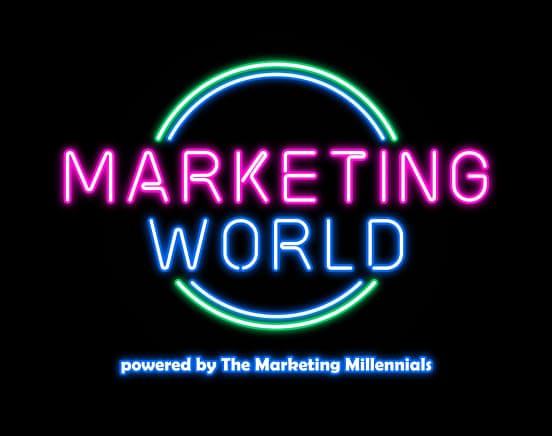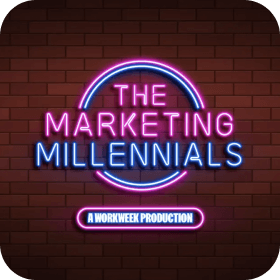I am STOKED for you to meet today’s guest, Val Geisler.
Val is a retention marketing ICON.
Currently the Customer Advocacy Lead at Klaviyo, Val is a Top 100 Customer Marketing Influencer and a CustomerX Award Nominee, who just gets marketing.
Here’s what she had to say on The Marketing Millennials Podcast, in her own liiightly edited words.
1. How to improve your customer acquisition:
“Acquisition is important. It’s important to go get new customers.
But if that’s all you’re focused on, you’re missing out on the experience for those customers when you bring them in the door.
Why go get hundreds of new customers if they’re gonna have a terrible experience and leave the second they come in.
Caring about the onboarding experience and the way that your customers experience your brand is really important for acquisition. Marketers should care about what that experience looks like, because it tells you how to market your brand.
Marketing is so much more than just features and promises, it’s an experience too (screaming this from the rooftops).
A huge piece of marketing is those really happy customers turning around and bringing more customers in. They can do acquisition for you.
Everyone wants to build out their referral or affiliate program. Most of them are not built properly, they’re an afterthought.
If you think through the overall experience and the journey from buyer to customer, it becomes more cohesive. You see the flywheel that exists between someone who didn’t know about your brand and now they are using your brand, then they’re loving it, and then they’re telling other people about it.
It should all tie together.
2. Designing a good customer experience:
Building a customer experience is quantitative and qualitative.
Take a look at your ideal customer. What are the things that they do that lead to success with you down the line? This applies whether you’re a SaaS company or a product.
Let’s say you sell a protein supplement and you recognize that after 3 purchases, that’s when you know you have a customer for life (#bestie4therestie).
Level up your marketing game
Zero BS. Just fun, unfiltered, industry insights with the game-changers behind some of the coolest companies from around the globe.
No spam. Unsubscribe any time.
So you need to really focus on the experience of getting to that 3rd purchase. Don’t actually consider that customer, a fully sold customer until they are at that 3rd purchase.
Once you get there, you need to think about how do we retain them? How do we get them onto subscription? How do we make this experience better for them now that they’ve bought three times?
Looking at that cycle is really important. Identifying those things that customers are doing that make them successful with your brand, that’s the quantitative side.
Then the qualitative side is talking to your customers and finding out what are the things that they really enjoy about your brand?
Where do things fall off track for them?
And most importantly, what are they telling other people?
(That last piece is HUGE)
3. Customer retention is as important as acquisition:
Customer retention is as equally important as acquisition.
There’s a lot of people who over index on acquisition. If you pull up marketing Twitter, 80% of people are talking about ad spend, meta costs, and what to do on Google (Val just exposed me LOL).
Your existing customer’s experience, retaining those customers, and turning them into advocates is just as important as all of the acquisition tools that are being talked about constantly.
The reason retention is not as talked about is because it’s not as easy to do, it’s a long term game.
The reason people talk about ad spend is because it’s pretty instant. You can put money in and then have your data back. It’s black and white.
Building out your existing customers and customer experience is a little bit softer. The results are harder to track.
It’s not instant, but if you are tracking it and you see the average lifetime value is 3 months longer for someone who’s part of your affiliate program than someone who’s not, that’s significant.
The ability to track things like that will give you the same adrenaline bump that you get from acquisition data.
(Us marketers need that adrenaline bump)
4. A marketing trend to jump on:
Retention is starting to matter more to brands.
5 years ago, there were no job postings for retention marketing managers or directors of retention. Nothing in that realm. It was all rolled into customer service or email marketing.
Those channels are places where retention is impacted, but we’re seeing more and more roles posted that are focused solely on retention. Especially from subscription brands.
They’re saying, “We need to find a way to convert more of our existing customer base into these long term subscribers, and build those relationships.”
We’re heading into a possible recession, so companies are looking at cutting costs and thinking about how they can be more strategic with their spending.
Focusing on customer marketing, retention, and the actual experience inside of your brand is becoming more important versus hiring people to run ads and attract customers that way.
Those more traditional marketing routes are still there and still very important, but retention is on its way up.
5. Why you should ditch marketing playbooks:
People love to lean on playbooks, frameworks, and industry standards. Those are really great foundational pieces.
But take the things that work for you, resonate with you, and then leave the rest.
You don’t have to take the playbook from another brand and apply it 100% directly to your brand. It’s not going to work that way.
If you worked somewhere else and had a super successful campaign, you can bring elements of that to your new role.
You need to think about what pieces are the most important for this new audience, role, and work that you’re doing. Then let everything else from that playbook or framework go (yessss, so right).
If you try to apply the entire framework word for word, it’s not gonna work out.
Things evolve over time. If we’re all just copying each other, then our customers are going to start to notice.
You can’t copy and paste in this world.”



